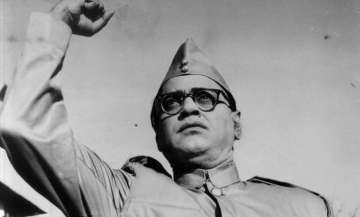A DNA test of the remains of Netaji would put to rest the doubts of people over his death, says his daughter Anita Bose-Pfaff.
She, however, says that this would be possible if DNA can be extracted from the bones remaining after his cremation.
Prof. Bose-Pfaff makes this observation in a new book titled Laid to Rest: The Controversy over Subhas Chandra Bose’s Death by Ashis Ray.
The remains of Subhas Chandra Bose are believed to be preserved at Tokyo’s Renkoji temple since September, 1945.
Netaji, whom the country is remembering on his 121st birth anniversary on Tuesday, is believed to have died in an air crash in Taiwan on August 18, 1945. “For most of those people who continue to doubt Netaji’s death in Taihoku in August 1945, one possible option for proof would be a DNA test of the remains of Netaji — provided DNA can be extracted from the bones remaining after his cremation,” Prof. Bose-Pfaff writes in the book’s foreword. “However, the governments of India and Japan would have to agree to such an attempt,” she says.
According to Prof. Bose-Pfaff, if the state of general information available in the later 1940s is considered, it is understandable that at the time an uncertainty prevailed regarding what had happened to Netaji.
“After all, some documents had not been made public at that time. When Sarat Chandra Bose died in 1950 he could still cling to the hope that his beloved brother had not died. And his belief also upheld Emilie’s hope that her husband had survived,” she says.
“However, as evidence became available from the mid- 1950s, the only consistent story about Netaji’s demise remains his death in a plane crash on 18 August 1945,” she writes in the book published by Roli.
“For me personally, this fact was brought home most strikingly when I had the opportunity to be present during the interview of one of the survivors of the plane crash by Professor Leonard Gordon in Tokyo in 1979,” Prof. Bose-Pfaff adds.
The book is scheduled to release on February 12.
Latest India News

